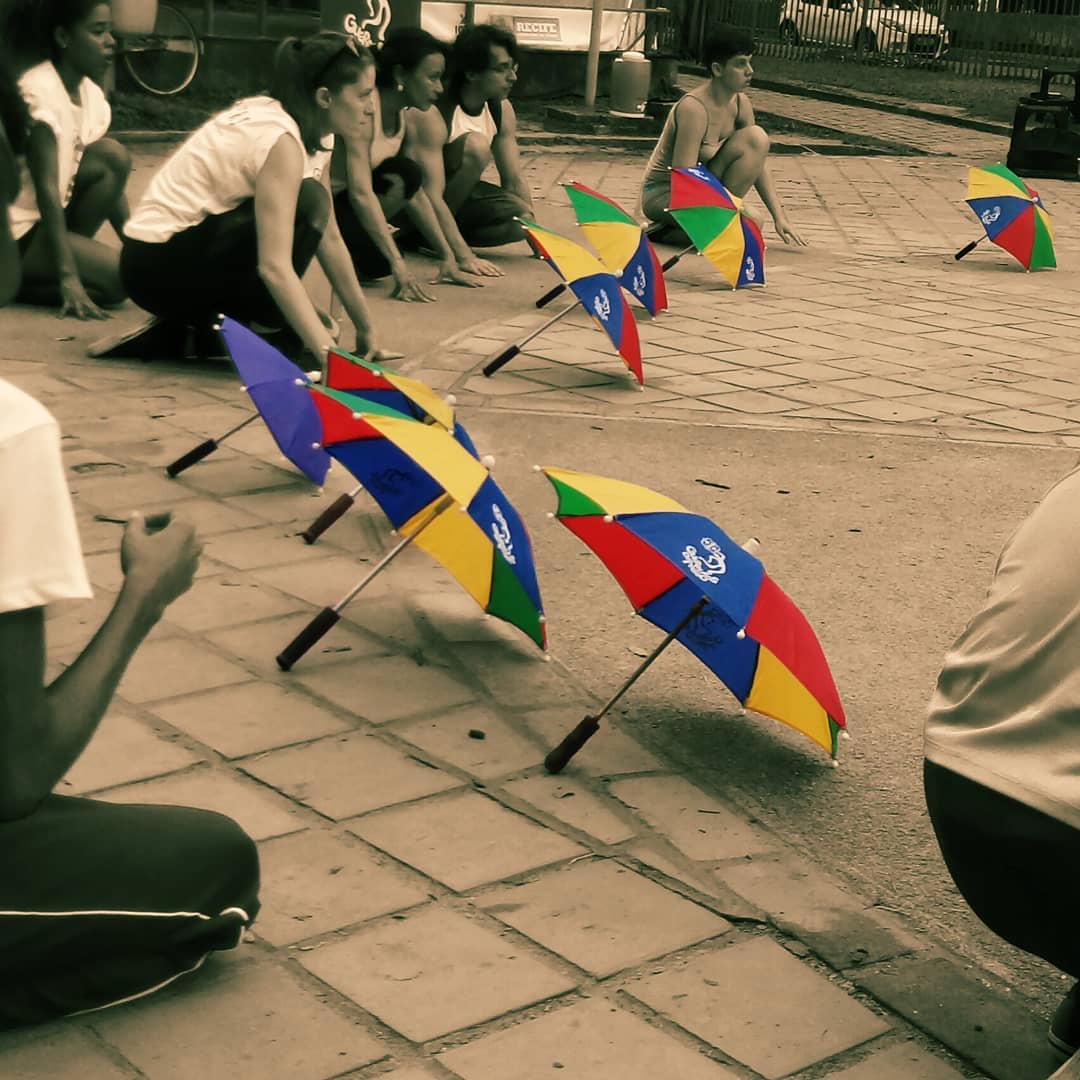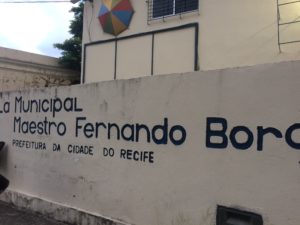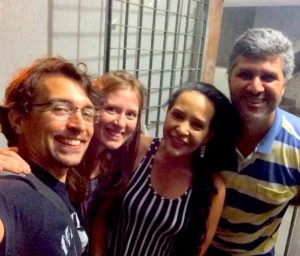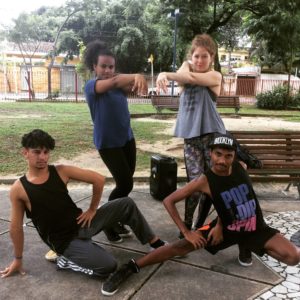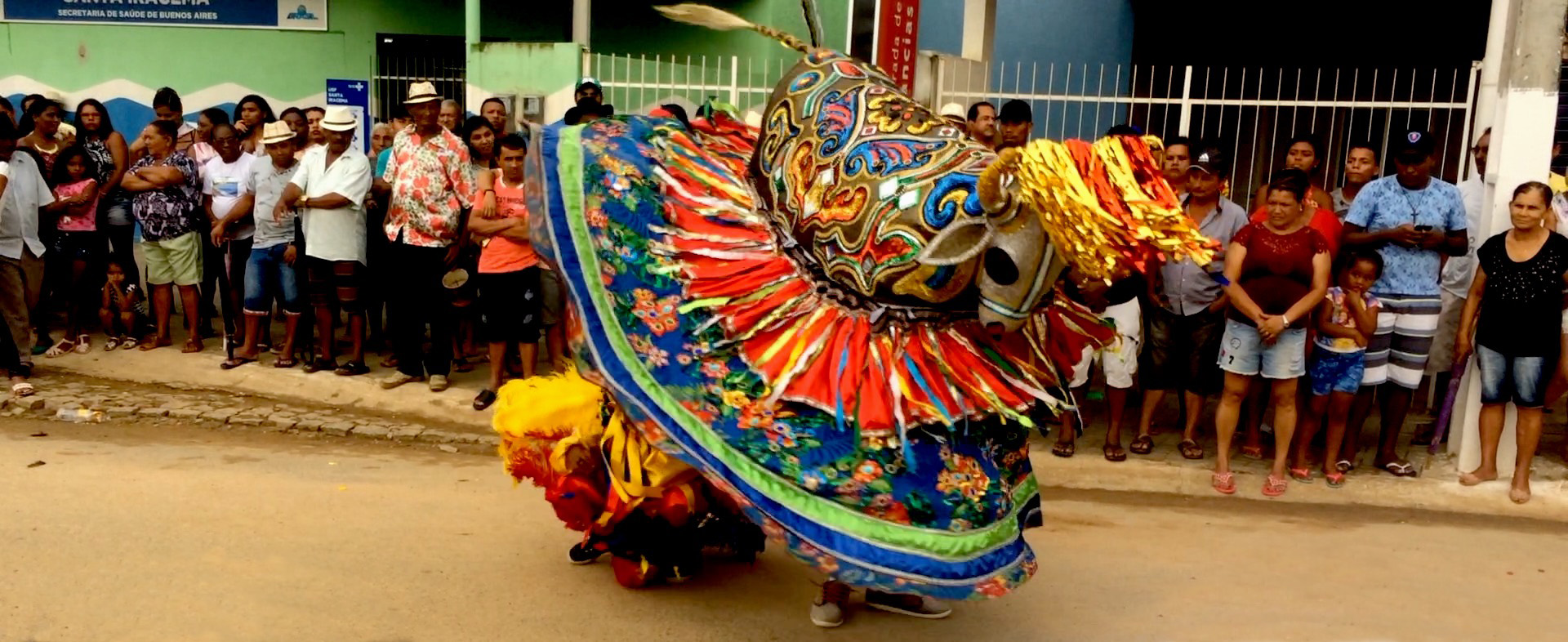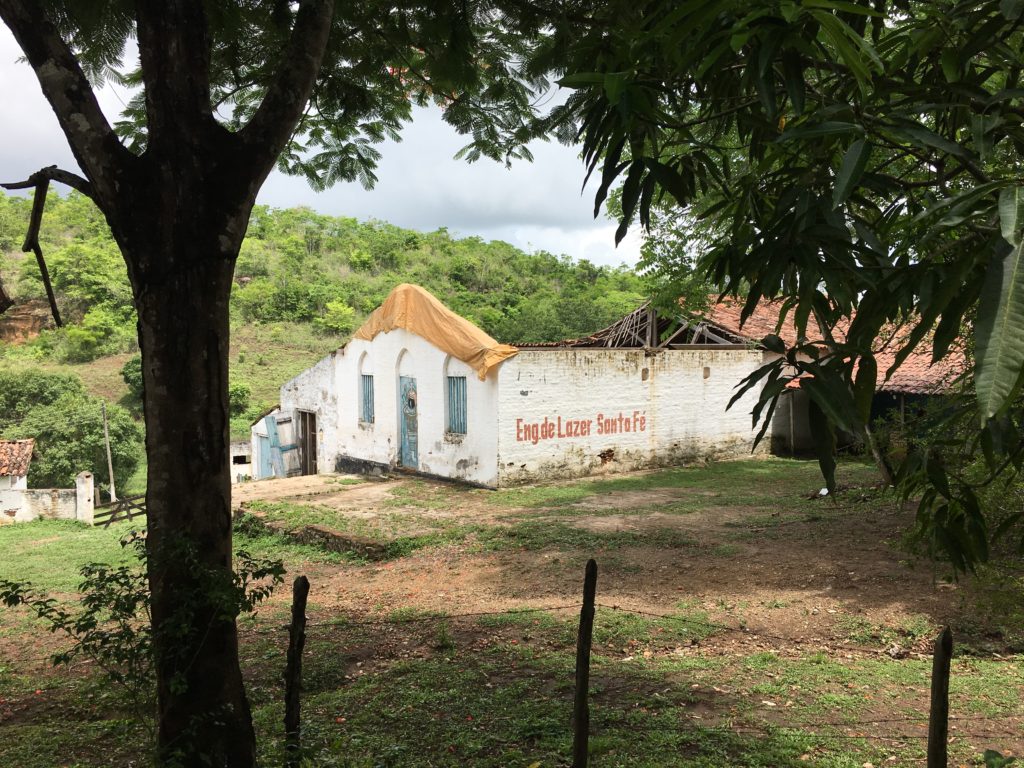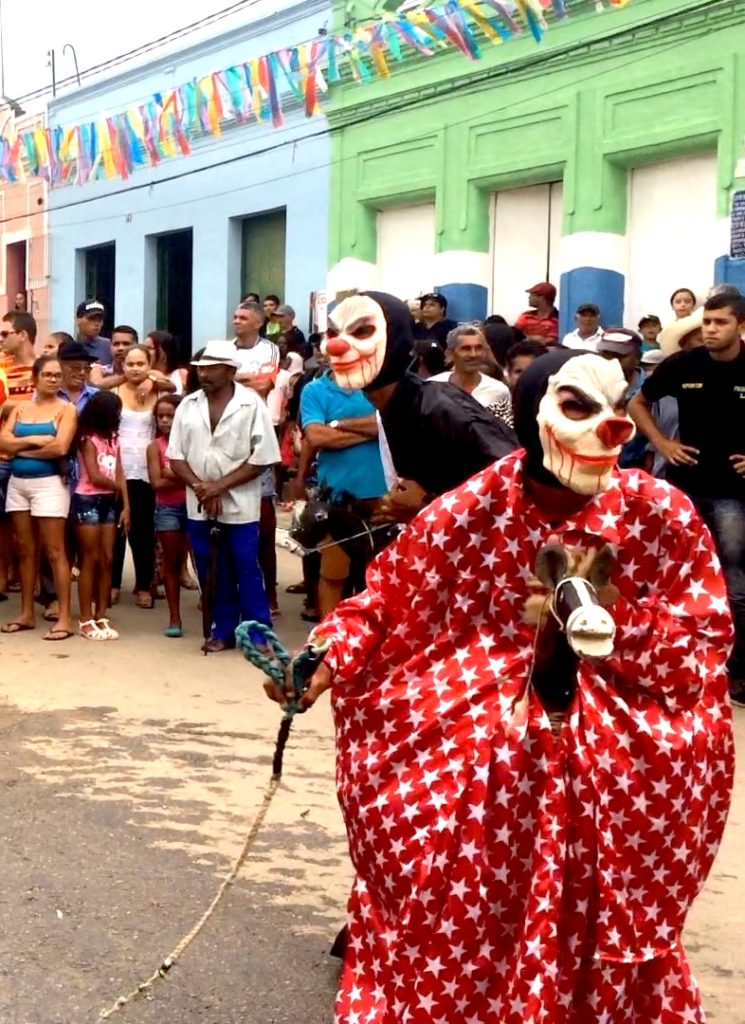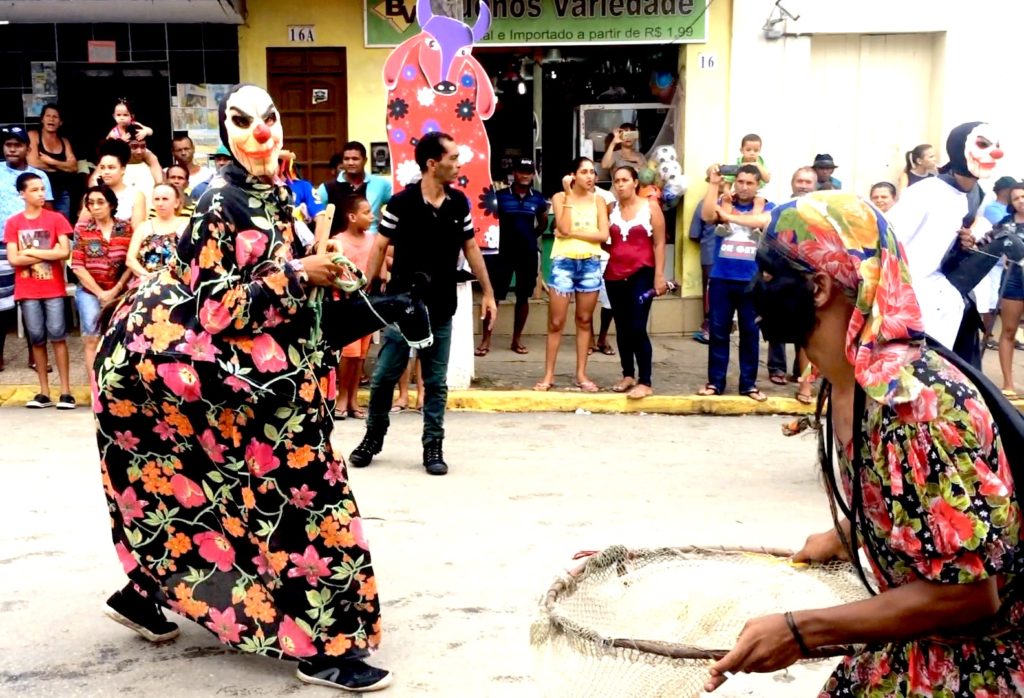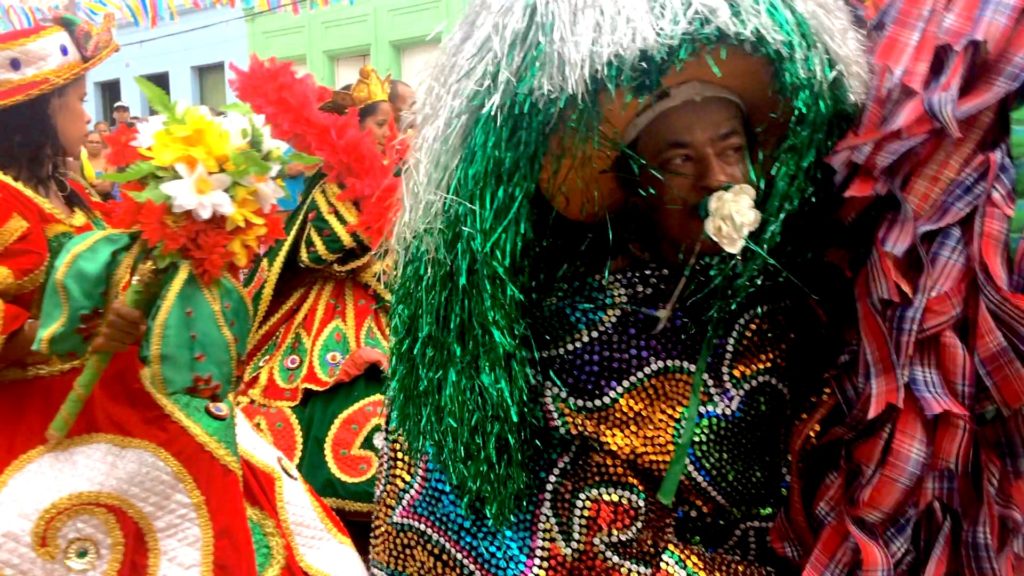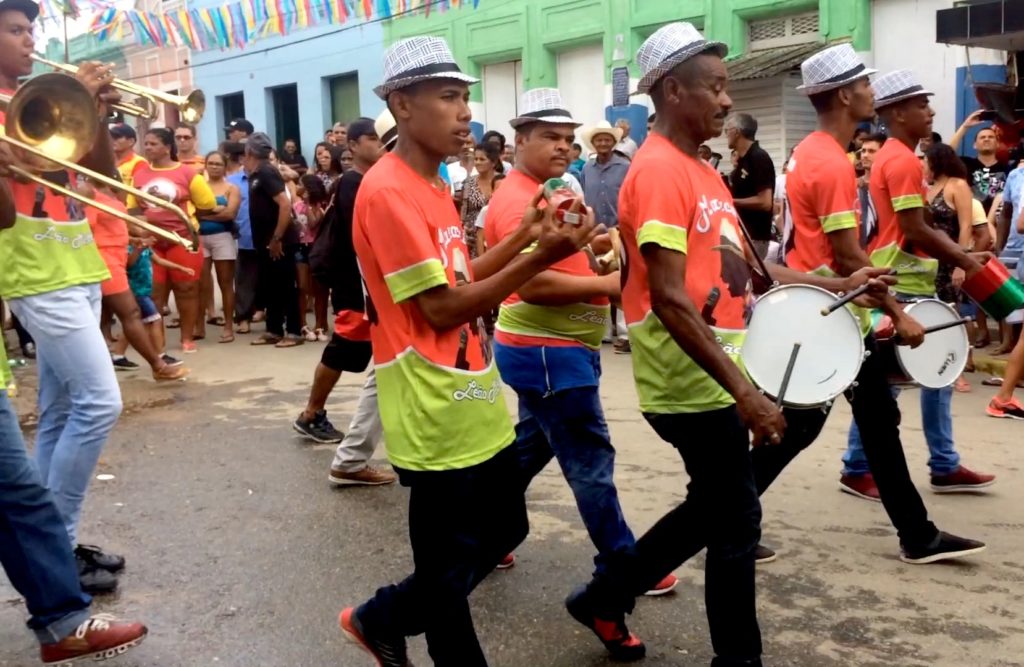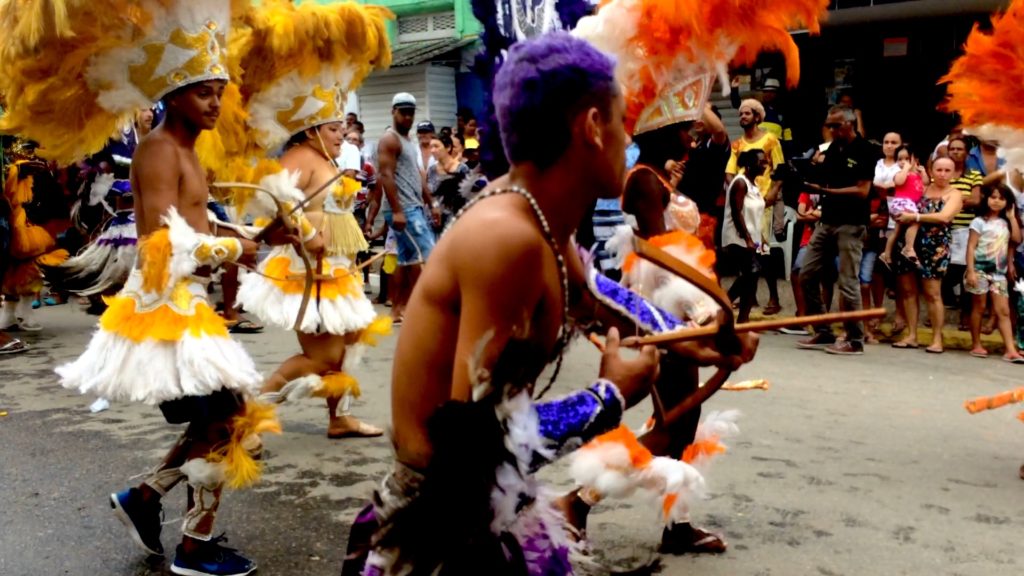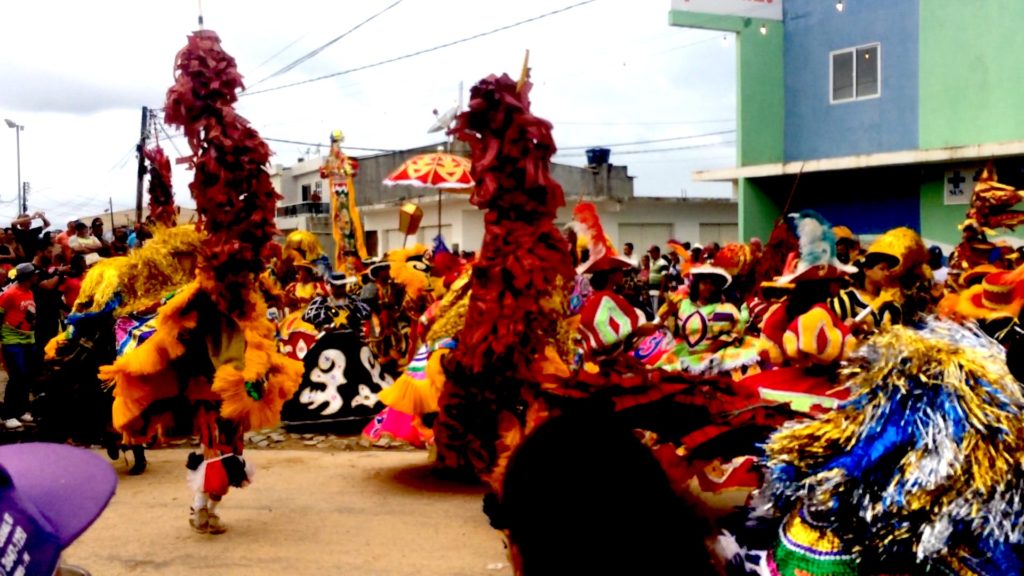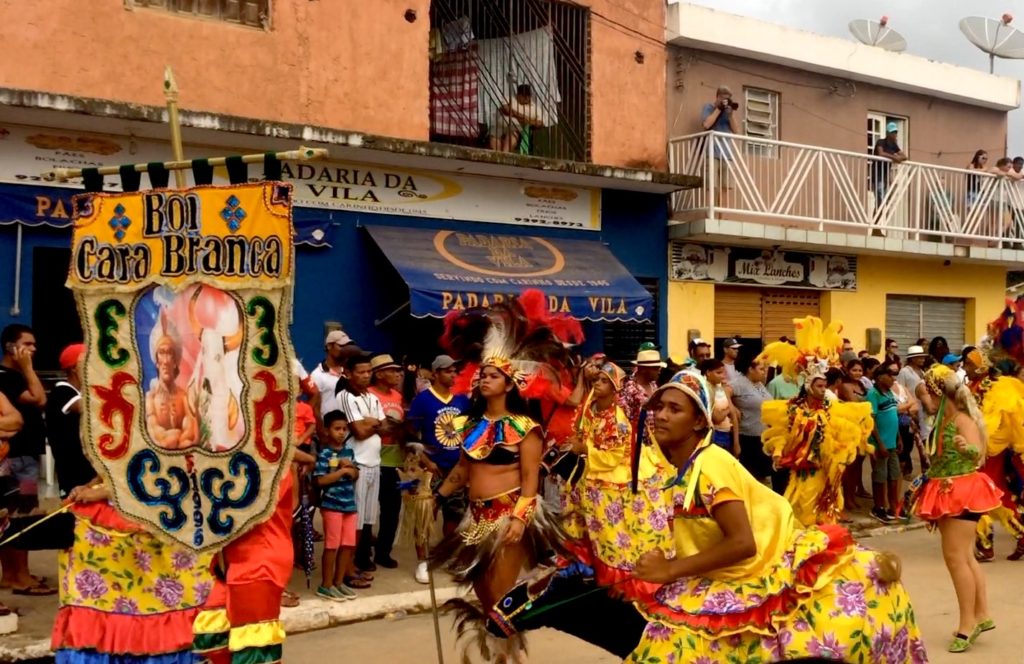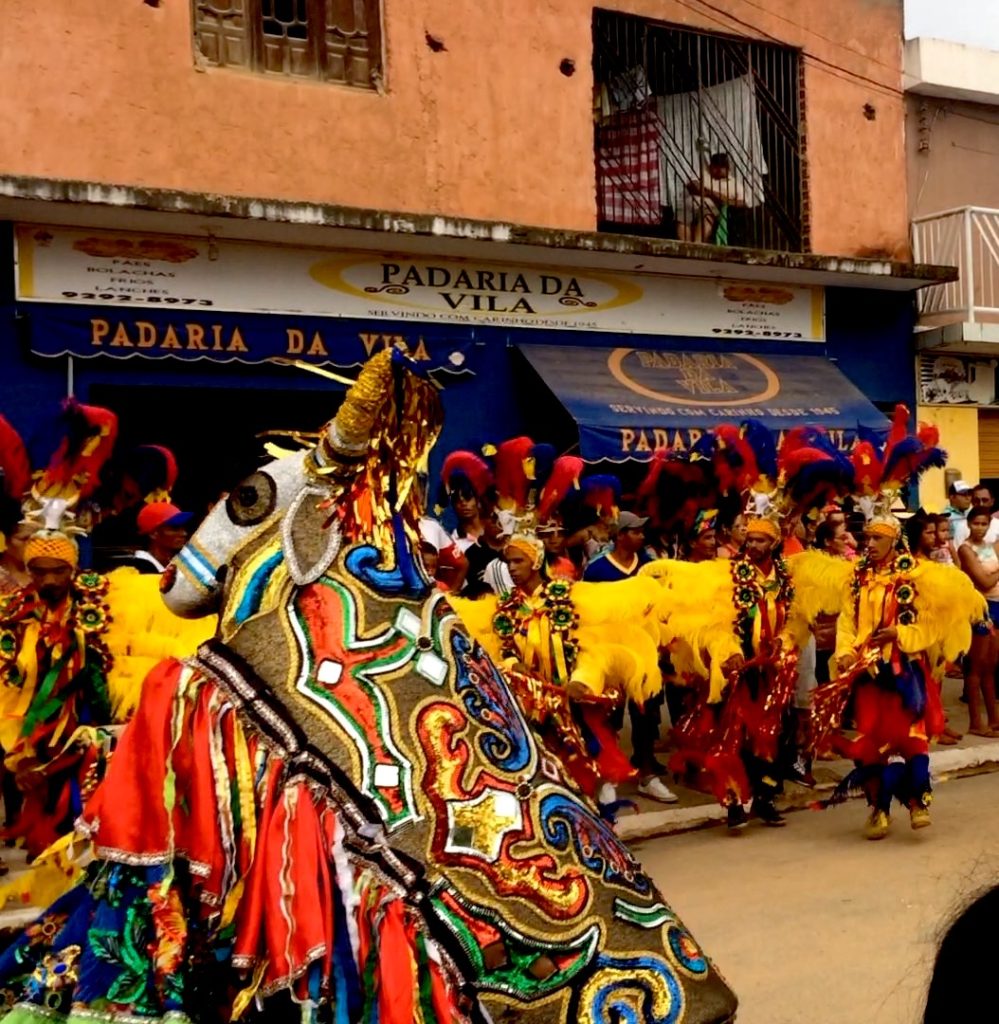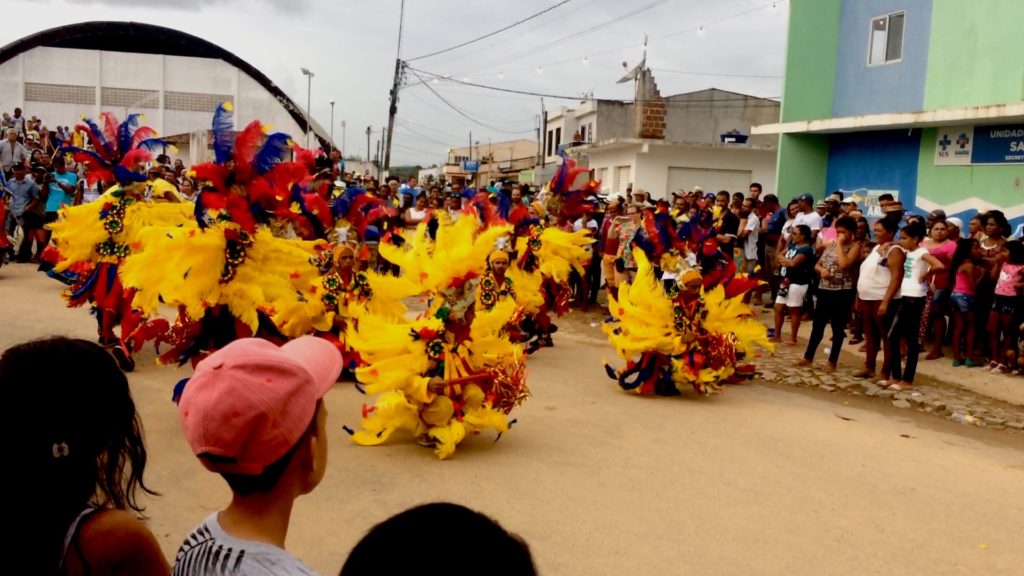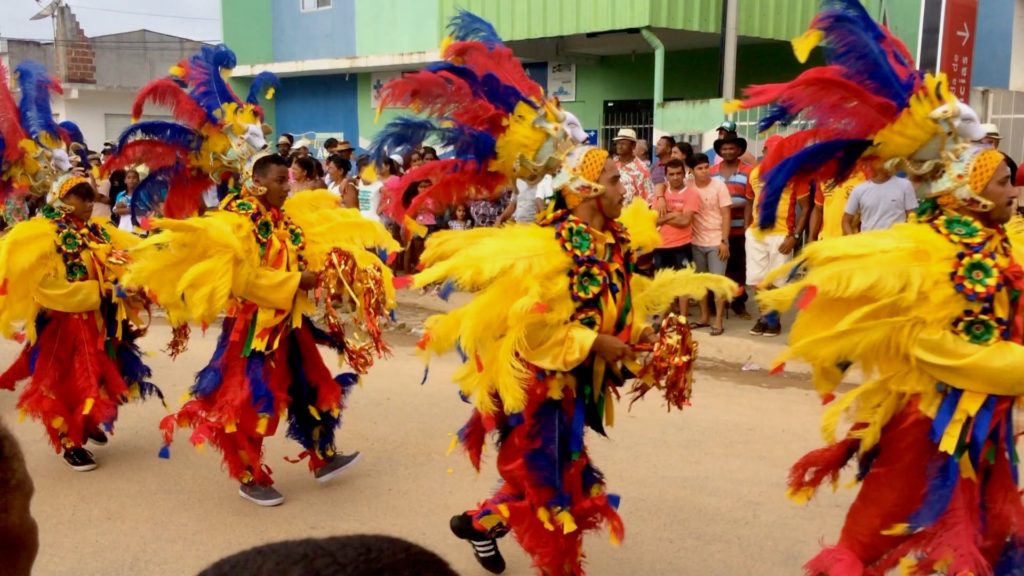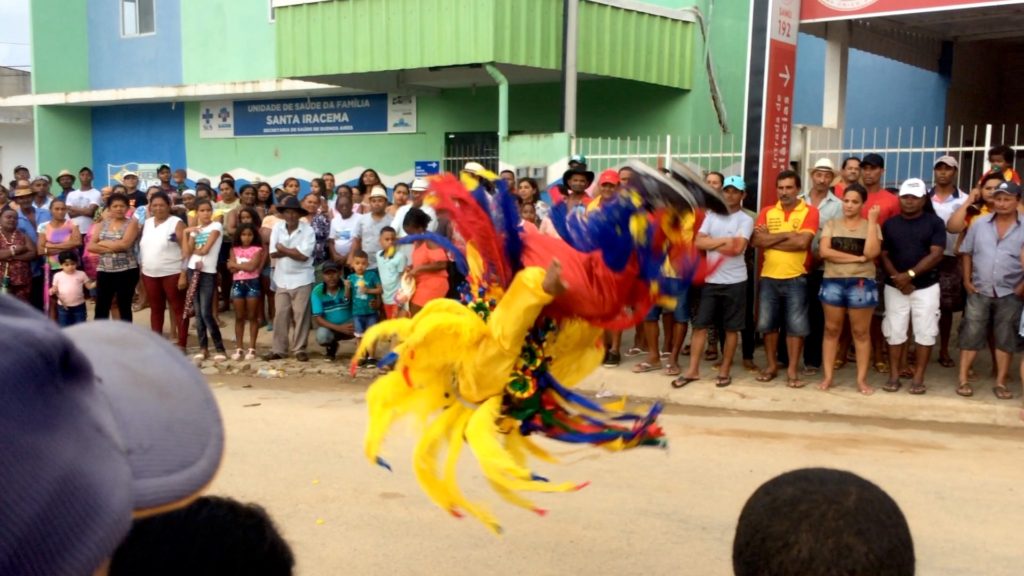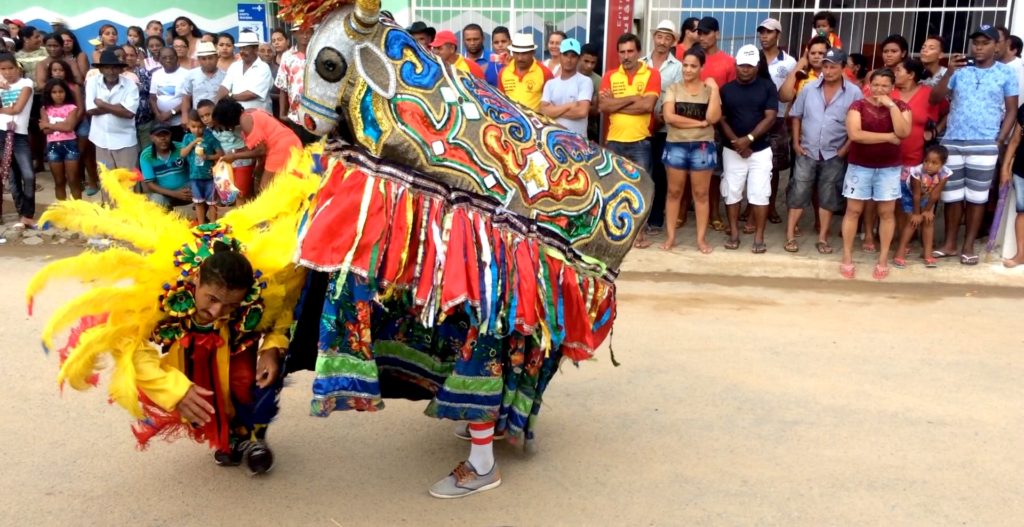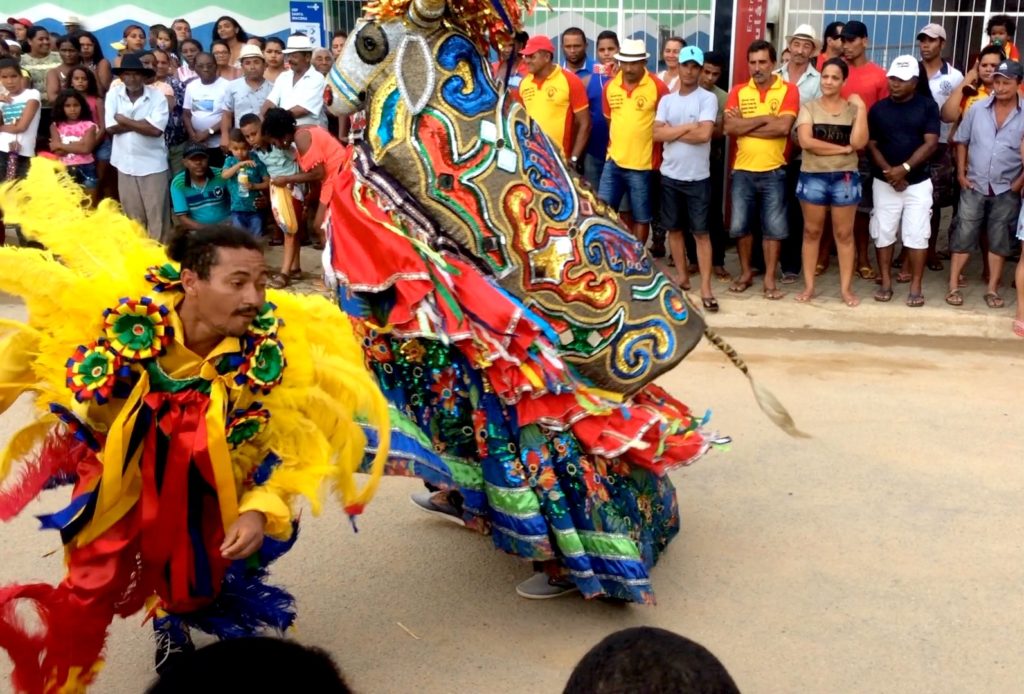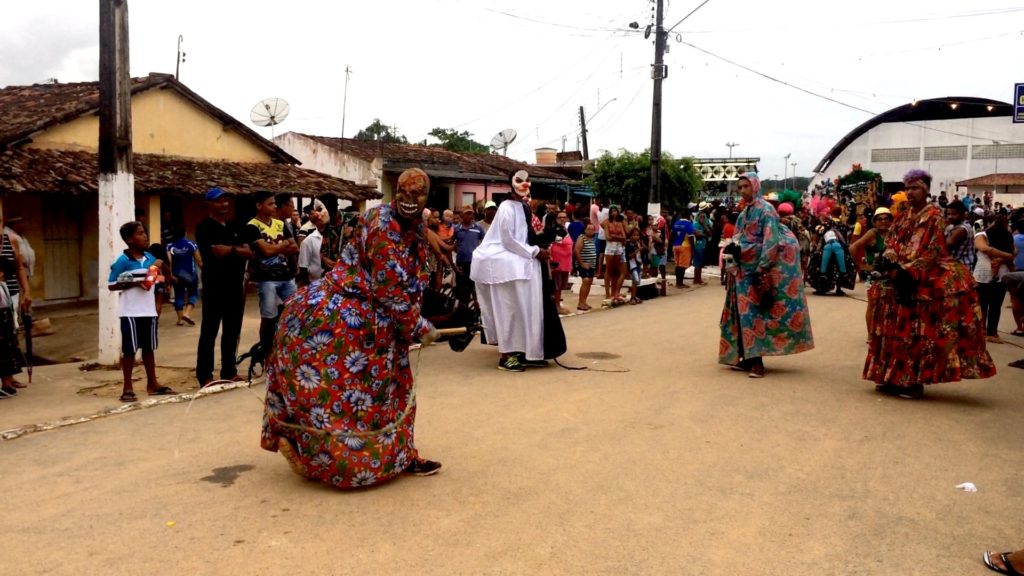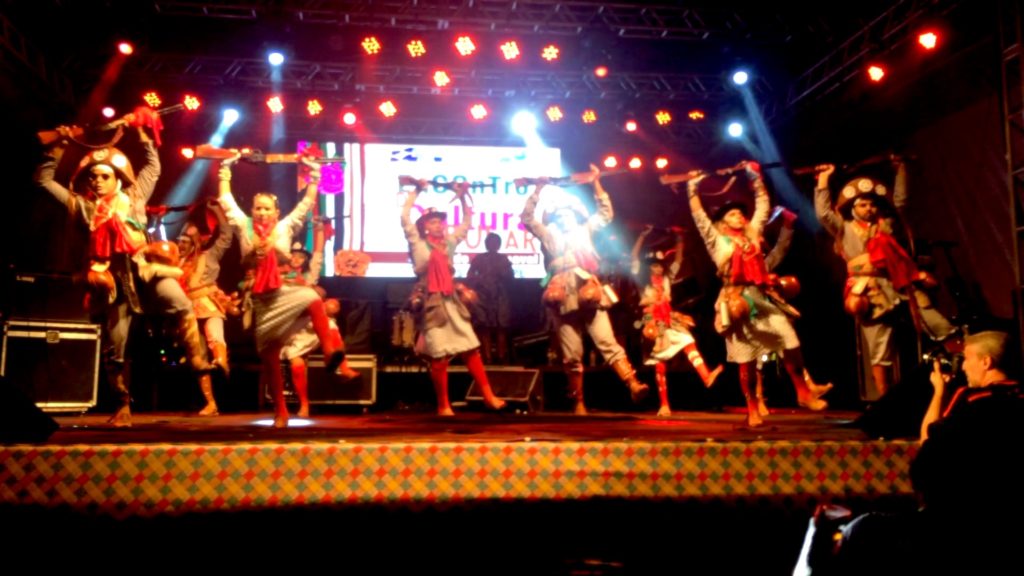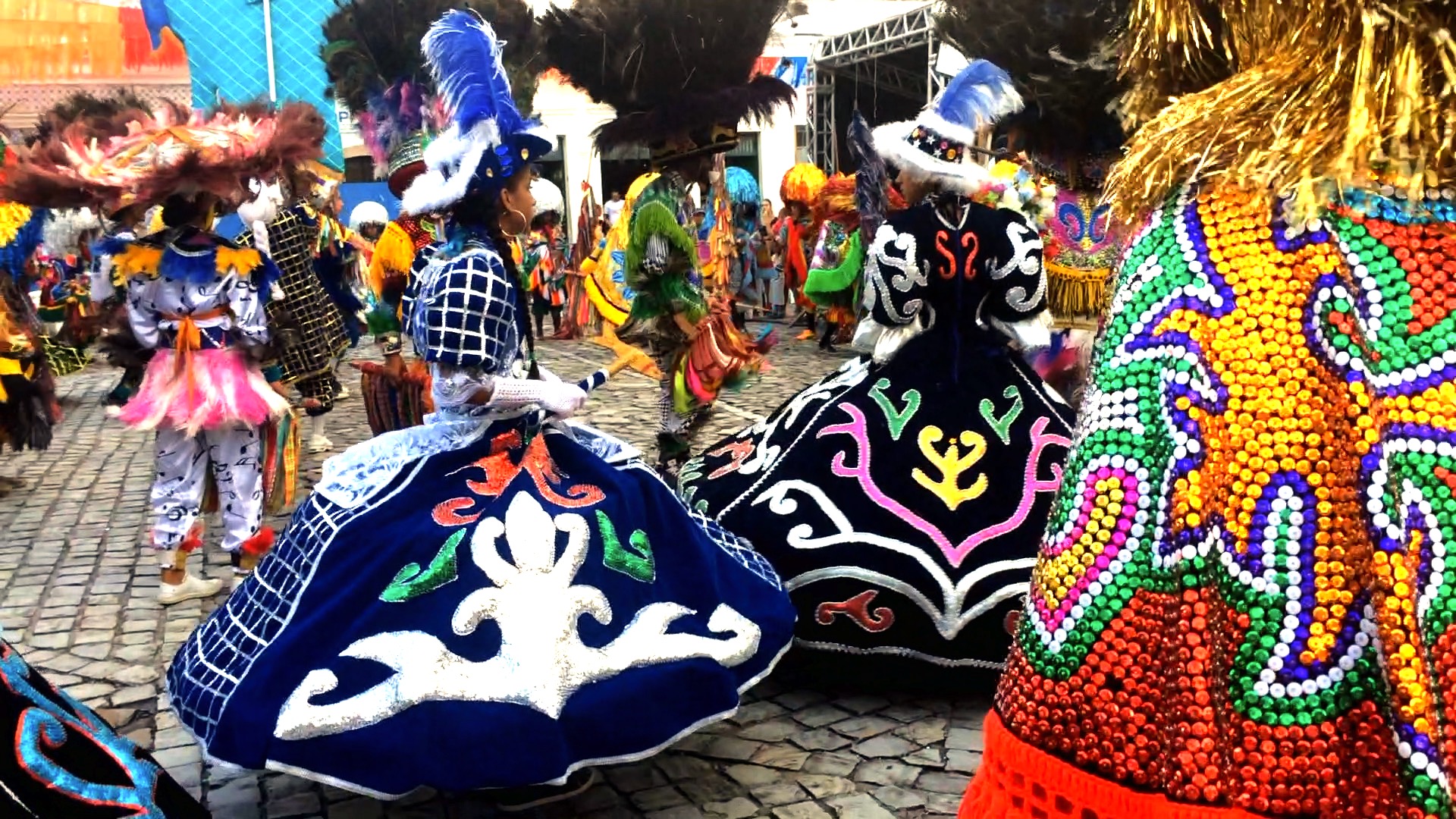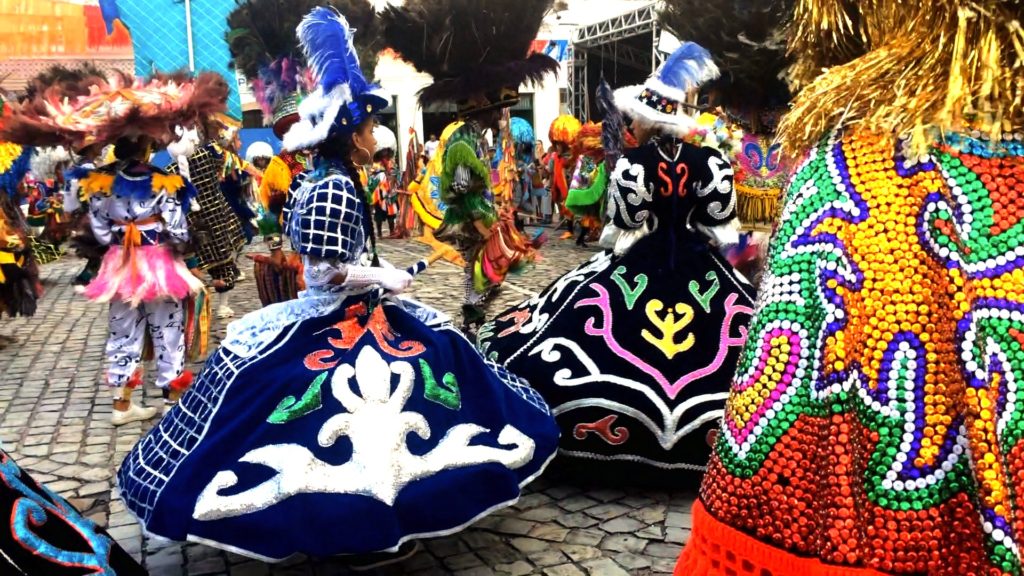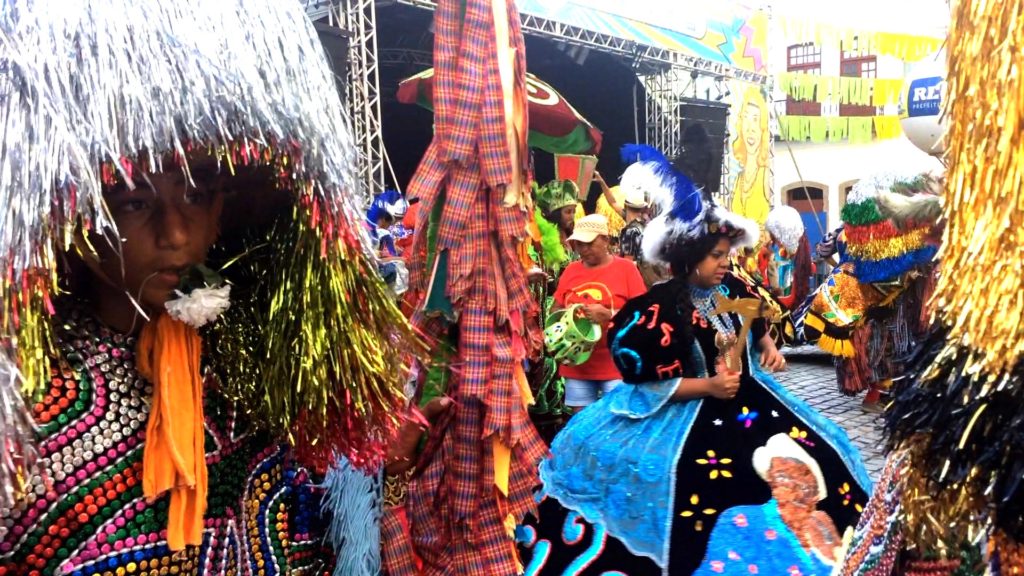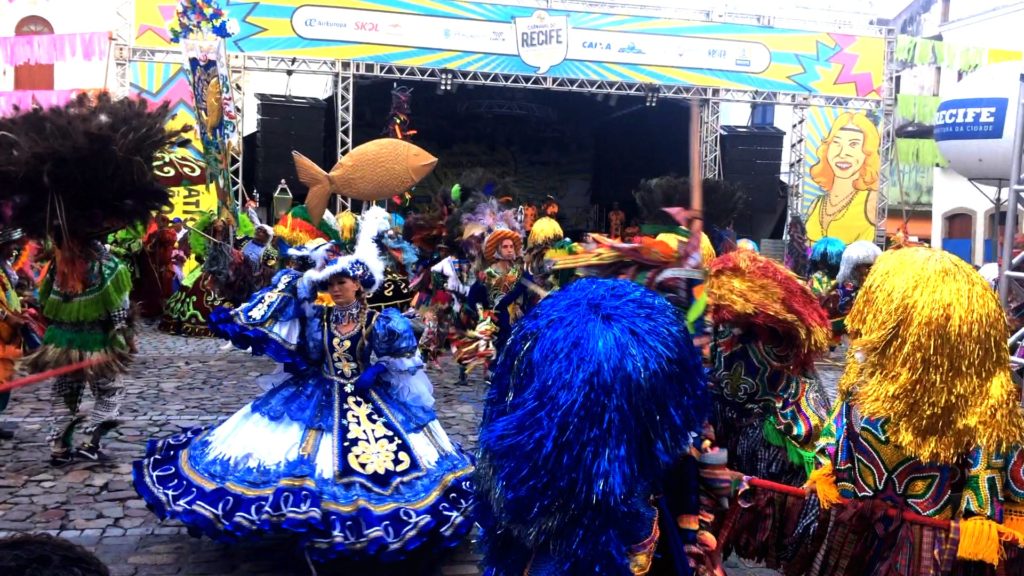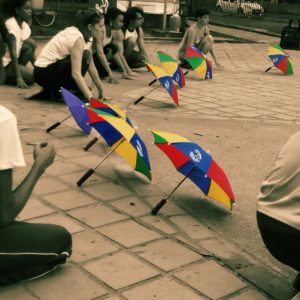
April has been the month for dance classes! This month I dove headfirst into frevo and cavalo marinho classes, and I’m starting to see the hard work and consistent practice pay off. Not only are the movements getting physically better, but I’m also working on musicality, rhythm, and developing the right “feel” for the dances. I’m also lucky to have instructors who are willing to talk to me about the historical and cultural context of the dances.
I have been taking two classes a week at the Escola Municipal de Maestro Fernando Borges with instructor Junior Viegas. The class is for beginners, but there seems to be an expectation that everyone in the class has seen frevo, is familiar with the context (i.e., Carnival), and has a willingness to try some pretty difficult moves. We always start with a quick warm-up and stretch, followed by some movements in the middle of the room. The class is fast-paced and the music is loud, so I always feel jolted awake with a bit of an adrenaline rush. I am still learning the names of steps, so it takes me a second to, first, know what step we are being asked to do, and second, figure out that step! We also do some movements across the floor in pairs, which gives us some time to observe our fellow classmates (and catch our breath). I am enjoying the challenge of learning a lot of new steps and feeling improvements in speed, control, and flexibility over time. The class is an hour long, and it goes by quickly!
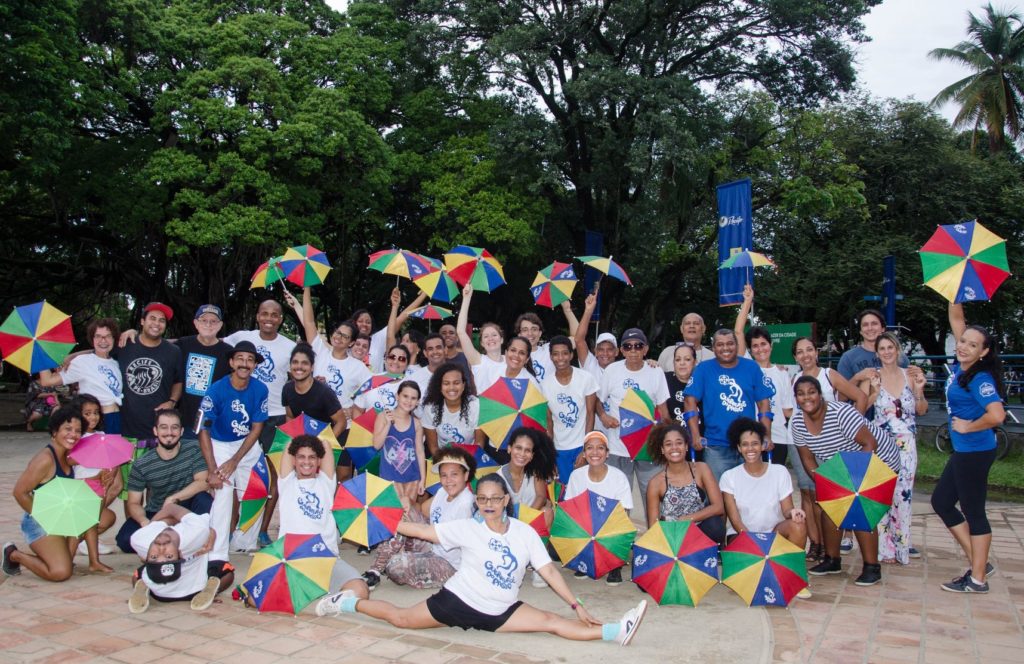
I am also dancing with the Guerreiros do Passo every Saturday afternoon at Praça do Hipódromo. The class is three hours long! I started taking classes with them before Carnival, but they took a break and started up again after Easter. This class is based on Nascimento do Passo‘s method and is quite different from class at Escola Municipal, although there are similarities. We do a lengthier warm-up and stretch to non-frevo music (salsa, hip hop, anything to get the heart pumping), followed by a frevo-specific warm-up that includes rhythmic exercises that help us ease into the music. Although one instructor leads the class (currently Laércio Olimpio), there are a bunch of other Guerreiros instructors who walk around and give us individual tips.
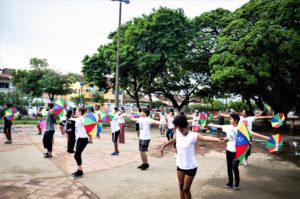
 Photo credit: Guerreiros do Passo
Photo credit: Guerreiros do PassoWe do two rodas, when we make a big circle and clap to the music while each of us has an opportunity to improvise individually in the center. The first roda follows the first section of class, which seems to focus more on footwork, and the second section seems to focus more on floorwork. I appreciate having two opportunities because I have been trying to use the first roda to get warmed up, feel the music more, and not try to do anything too fancy. In the second roda, I try to take more risks, which for me is doing more movements “em baixo” (low), and eventually I want to try to do some jumps too.
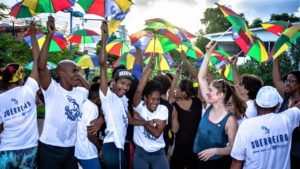
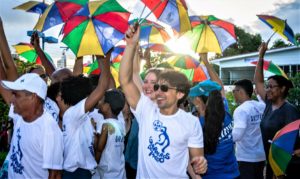 Photo credit: Guerreiros do Passo
Photo credit: Guerreiros do PassoWe always end each roda with a fun confusão that is reminiscent of the fervent, sweaty madness of Carnival 🙂
After the second roda, we usually cool down with some other popular dance styles. Over the past few weeks, these styles have included Afro, coco, cavalo marinho, and ciranda. This is awesome because each style is very distinct (in terms of both movement and music), but there are little connections between each of them. Including other dance styles in the class helps contextualize frevo for me (as an outsider), as something that is distinct but is also part of a larger “constellation” of popular dances from Pernambuco.
I also did an interview last week with Lucélia Albuquerque and Eduardo Araújo of the Guerreiros do Passo. It went for 2+ hours and I was so appreciative of all the information and opinions they were willing to share with me! Class goes by so quickly and we don’t often have a chance to ask questions and hear the reasons why certain things are done a certain way, but it is clear that the Guerreiros do Passo have thought through everything and create their work with clear intentions.
In addition to frevo, I have continued Fabio Soares’ cavalo marinho and maracatu rural classes at the Paço do Frevo. I’m always astounded by his attention to detail and insistence that we feel the nuances of the movement. The footwork may seem rather basic at first (for example, stamp two feet together and then step back twice), but Fabinho corrects our posture, our knees, the height at which our foot comes off the ground, exactly how our feet hit the floor and how they sound—everything matters. As he says, if we don’t do it just so, “é outra coisa” (it’s something else). For example, he can demonstrate how the same footwork in cavalo marinho and caboclinhos can have such different dynamics in terms of weight and sound. I might not have noticed if he hadn’t pointed it out, but it’s clear if you know what to pay attention to.
Maracatu rural is an interesting style and I am aware that I need more context to fully understand what we have learned so far. We, of course, do not dance in the amazing costumes that they wear, but Fabinho leads us through some exercises that help us get “the feel” for the dance. It is a bit aggressive and what we have done so far is “deflect” attacks from him or from another classmate while doing a simple footwork pattern to the rhythm of the music. It feels very much as though it exists in that in-between (liminal) space between seriousness and playfulness; I’m not sure what part of it is a game and what is a fight, or if it’s both simultaneously, and whether I should laugh or run away (ha!). Although it looks nothing like capoeira, that feeling of impending attack countered by playfulness is familiar.

Cavalo marinho continues to be challenging. I have never been so intimately aware of the bottoms of my feet and how they connect to the floor—which is an interesting thing for a percussive step dancer to admit, but, of course, I always step dance in shoes, and we do cavalo marinho class barefoot. We usually only do two or three steps per class and we repeat them over and over again. Somehow it doesn’t get boring; Fabinho gives so much feedback that I’m constantly adjusting and readjusting my posture and weight transfer, and discovering new things in the process.
I also attended one cavalo marinho class with Frank Sosthénes at Carvalho Stúdio de Dança in Boa Vista. That class was an entirely different experience. We did a ton of steps, one after the other, by following Frank dancing at full-speed in the front of the class. I loved the exposure to more steps and variations, and it was very challenging to keep up! We learned a choreography in the second half of class which included a mergulhão, which I’d only seen, but never participated in. This is a roda (circle formation) where one person goes into the center and “calls” another person, who then calls another, who then calls another, and so on. The “caller” and the “called” do a specific step that seems to go by in a blink of an eye. I have been fascinated while watching this because I can’t quite tell what the relationship between the caller and the called person is—there is momentary eye contact, but by the time you are called, you already have to think about who you are going to call next. It was fun (and admittedly frustrating) to try this for the first time, and I’d love to know more about what’s going on there.
Finally, I had one more new dance experience this month! I tried a vogue class with Edson Voguee, who is also a Guerreiro do Passo. He often incorporates vogue into his frevo solos, which works surprisingly (or not so surprisingly) well. There are certain similarities, especially in terms of floorwork (e.g., duckwalk and “patinho”). The class was also at Praça do Hipódromo and it was incredibly fun; I accessed some attitude within me that I’d never known was there 🙂
When I first met Edson, I actually recognized him from a video I saw last year on Facebook: “Dance Your PhD 2017 – Pop, Dip and Spin: The Legendary Biosensor For Forensic Sciences.” A vogue version of a dissertation in Forensic Sciences at Universidade Federal de Pernambuco!
Here also is a short video made by Ricardo Mantovanini about how Edson thinks about the relationship between vogue and frevo:
And on that note…are wrapping up the month of April in Salvador, Bahia, so stayed tuned for an update on that trip!

